The Riojan landscape is a patchwork of vineyards on gently sloping hills and valleys overlooking the Ebro River and its seven tributaries. If you drive up to El Balcón de La Rioja (the Balcony of La Rioja), a scenic lookout near the top of the Cantabrian mountains, you will enjoy a spectacular panoramic view of the valley below, with villages dotting the countryside, each with a church and its soaring clock tower.
On closer inspection, you can’t help noticing buildings made of steel, titanium and glass that shimmer in the sunlight in sharp contrast to their surroundings. These are some of the architectural masterpieces that have redefined the concept of the Rioja winery and have been key drivers in the development of winery tourism in our region.
Function vs Form
A winery is traditionally where grapes are received, vinified into wine, bottled, often aged in wood and bottles and sold. It is a working space known only to the employees and occasionally to groups of distributors, journalists and other specialists.
In Rioja, the transformation of wineries into architects’ showcases began with Bodegas Olarra, designed by Spanish architect Juan Antonio Ridruejo. The Olarra winery, built in 1973, predates the advent of wine tourism in our region. It served notice to the Rioja wine trade that a winery can be a beautifully designed building, not just a place where wine is made.
International Best Of Wine Tourism Award in 2011 for Architecture.
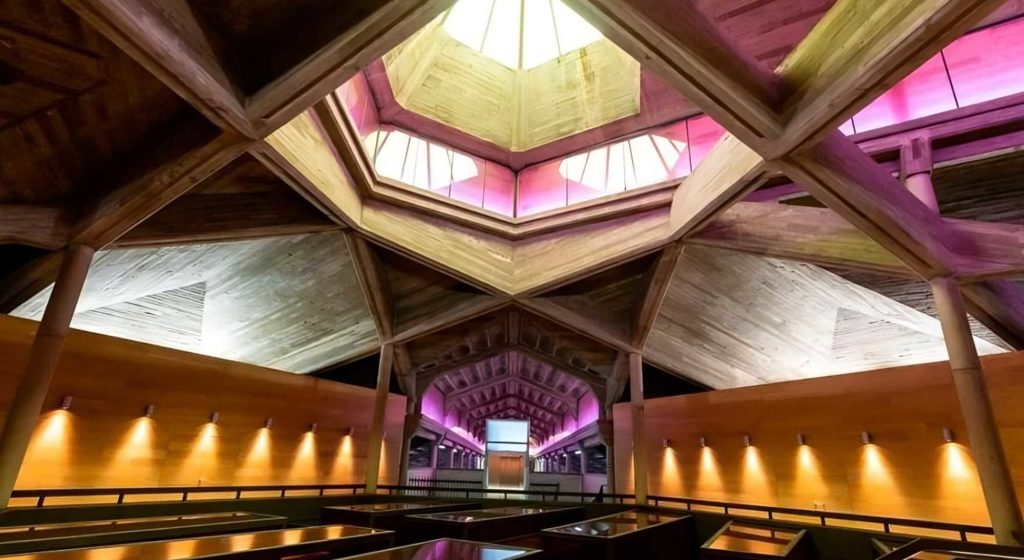
Photo: Bodegas Olarra (Logroño, La Rioja, Spain).
Bodegas Campo Viejo, designed by Riojan architect Ignacio Quemada, and opened in 2001, was the first winery built as wine tourism was becoming popular in our region. Campo Viejo is mostly underground, with only two ochre-colored above-ground buildings providing a hint that there’s a winery below. These buildings, one the administrative offices and the other, the visitors’ center blend in seamlessly with the surrounding landscape on a hill west of Logroño.
Best Of Wine Tourism Award in 2003 for Architecture.
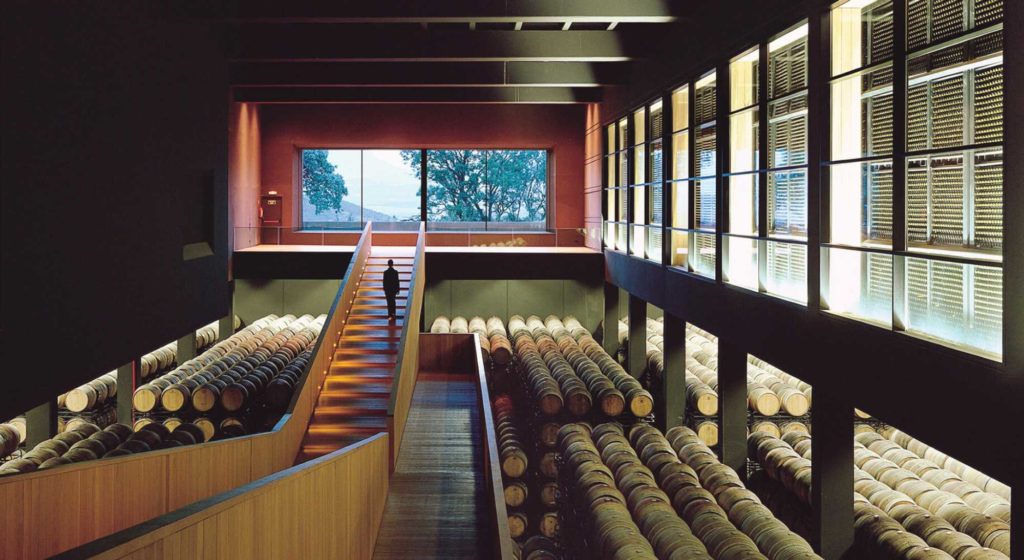
Photo: Bodegas Campo Viejo (Logroño, La Rioja, Spain).
Bodegas Ysios, with its shimmering titanium roof resembling the bow of a ship, presents itself majestically to visitors against the background of the Cantabrian mountains. It was designed by the Spanish architect Santiago Calatrava.
International Best Of Wine Tourism Award in 2006 for Architecture.
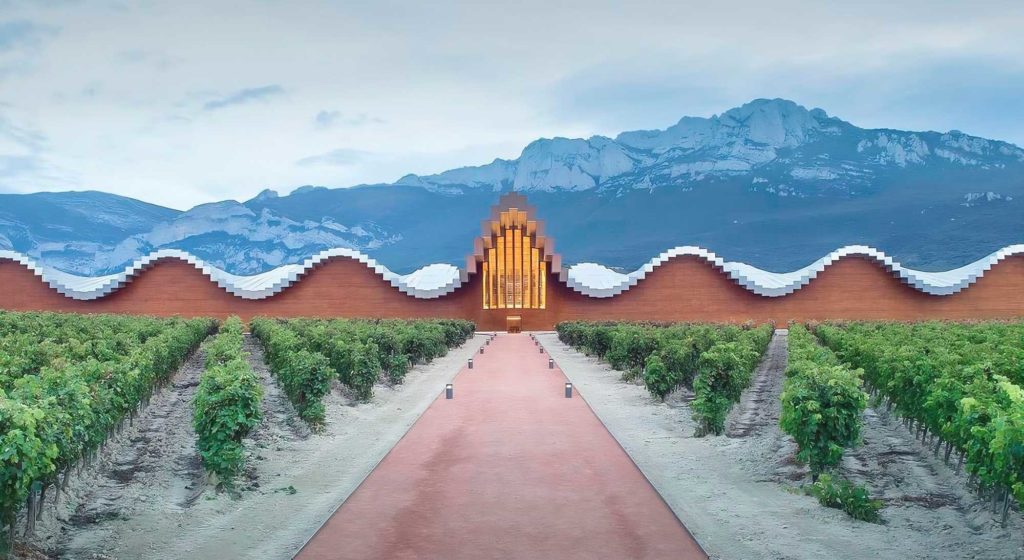
Photo: Bodegas Ysios (Laguardia, Álava, Spain).
Bodegas Baigorri, designed by Spanish architect Iñaki Aspiazu, was built into the side of a hill in Rioja Alavesa, with spectacular views of both the Cantabrian mountains and the Ebro Valley. Its eye-catching rectangular glass building greets visitors. When visiting Baigorri, you descend seven floors that follow the winemaking process. Grapes are brought in and crushed on an upper floor and the juice flows by gravity to the fermentation plant and then to the barrel cellar, the bottling line and the bottle ageing area.
The winery has a popular restaurant on the bottom floor.
Best Of Wine Tourism Award in 2005 for Architecture.
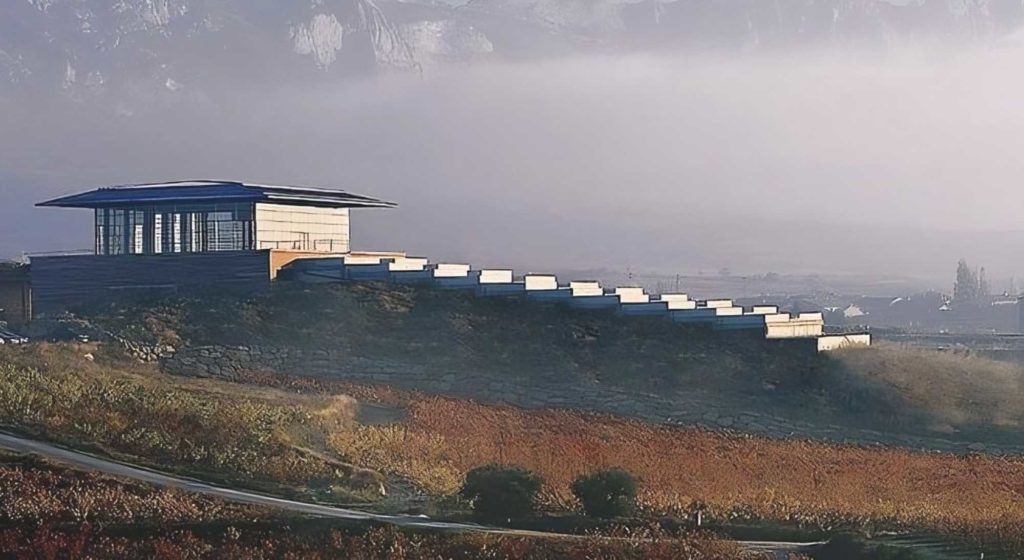
Photo: Bodegas Baigorri (Samaniego, Álava, Spain).
Bodegas Viña Real, part of the CVNE group of wineries, is a mostly underground inverted barrel-shaped structure built on the top of a hill outside Logroño. Its main features are a series of round beams supporting the roof of the winery and a huge barrel and bottle ageing cellar excavated from the hill.
Visitors marvel at the winery’s original system for moving grapes and wine between tanks, called OVIs (Identified Flying Objects).
Viña Real was designed by French architect Philippe Mazières.
Best Of Wine Tourism Award for Architecture, Parks and Gardens 2009.
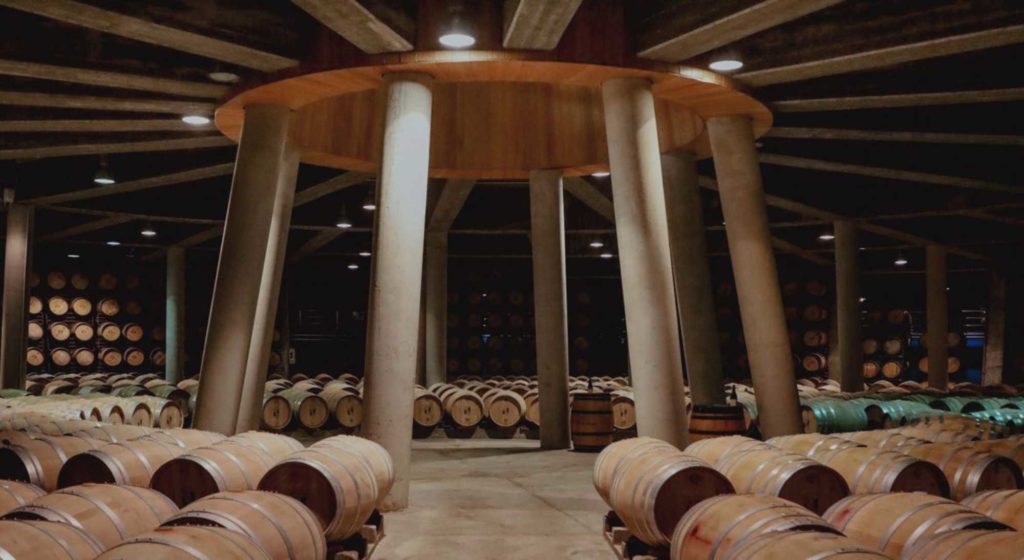
Photo: Bodegas Viña Real (Laguardia, Álava, Spain).
The Hotel Marqués de Riscal, designed by Canadian architect Frank Gehry, opened in 2006, stands out for its multicolored curved titanium roof that mimics the capsule and wine net that dresses Riscal’s bottles.
Best Of Wine Tourism Award for Architecture, Parks and Gardens 2007.
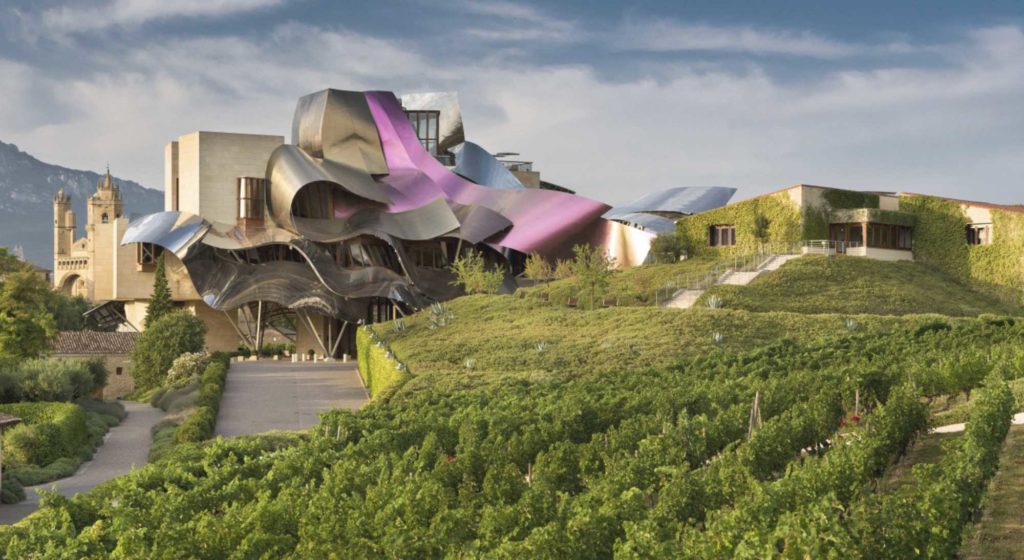
Photo: Marqués de Riscal (Elciego, Álava, Spain).
The Hotel Viura in Villabuena in Rioja Alavesa resembles oddly placed, multicolored cubes in the middle of a village that houses more working wineries than any other village in our region. The hotel is the starting point for the Villabuena Wine Route, where wine lovers can visit and taste at the participating wineries.
The Hotel Viura received a Best Of Wine Tourism Award for Accommodation in 2013.
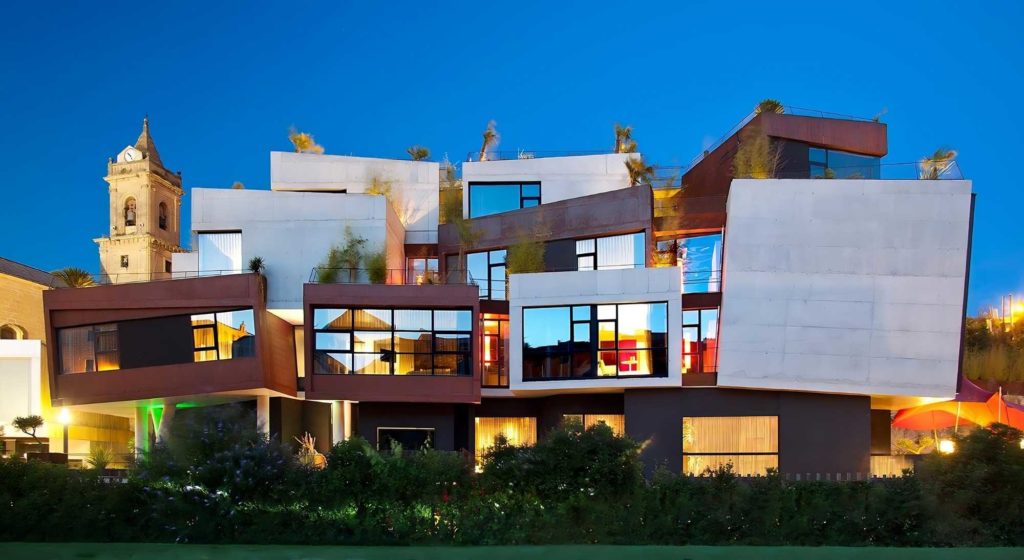
Photo: Hotel Viura (Villabuena de Álava, Spain).
Bodegas Beronia’s new winery, designed by Borja Gómez and the IDOM Studio is a graceful sweeping structure looking south across the Ebro valley towards the Demanda mountain range. It epitomizes the connection of form and function, using the most innovative winemaking and sustainable technologies, including the maximum use of rainwater and natural light, the optimization of energy resources featuring geothermal energy, minimal noise pollution, low visual impact on the surrounding landscape and integrated waste management.
Best Of Wine Tourism Award for Sustainable Wine Tourism Practices 2023.
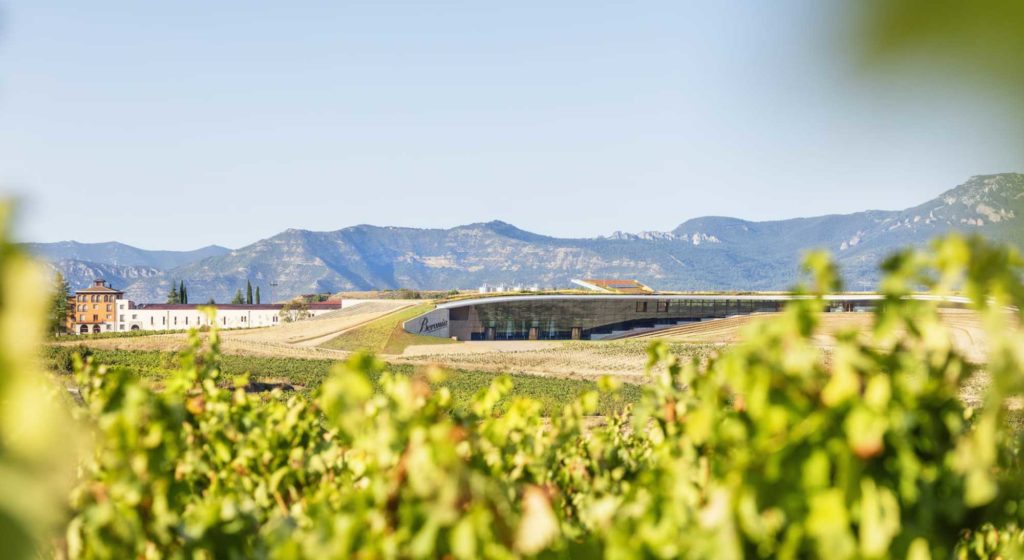
Photo: Bodegas Beronia (Ollauri, La Rioja, Spain).
Bodegas FyA on the outskirts of Navarrete in Rioja Alta is easily recognizable for its funky ochre and dark brown checkered façade. These colors represent the different tones of clay from which Navarrete’s legendary clay pots, plates and wine vessels have been fashioned for centuries. The winery houses an impressive collection of these vessels.
Best Of Wine Tourism Award for Art and Culture 2024.
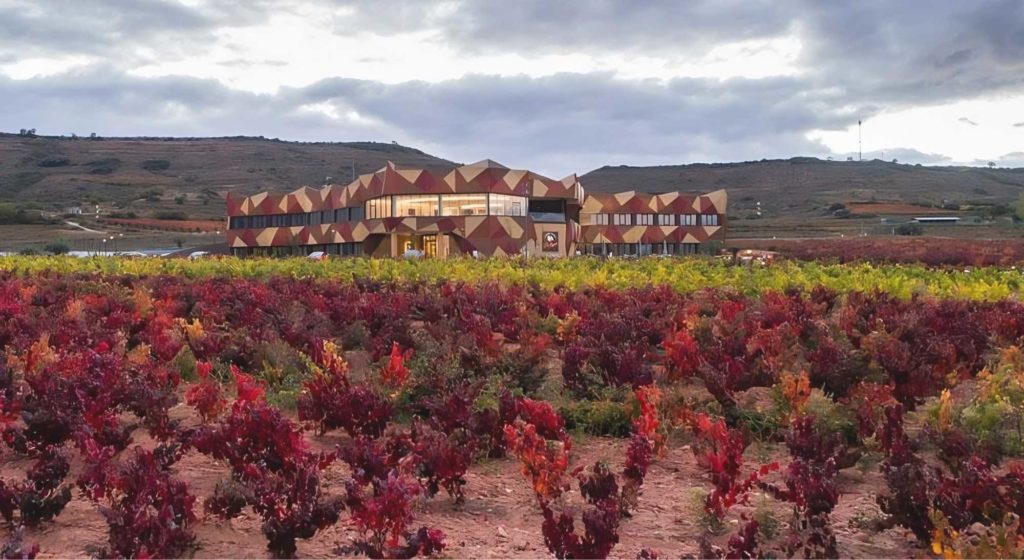
Photo; Bodegas FyA (Navarrete, La Rioja, Spain).
Text by Tom Perry, Inside Rioja
Featured photo: Marqués de Riscal
Learn more about Bilbao-Rioja Great Wine Capitals